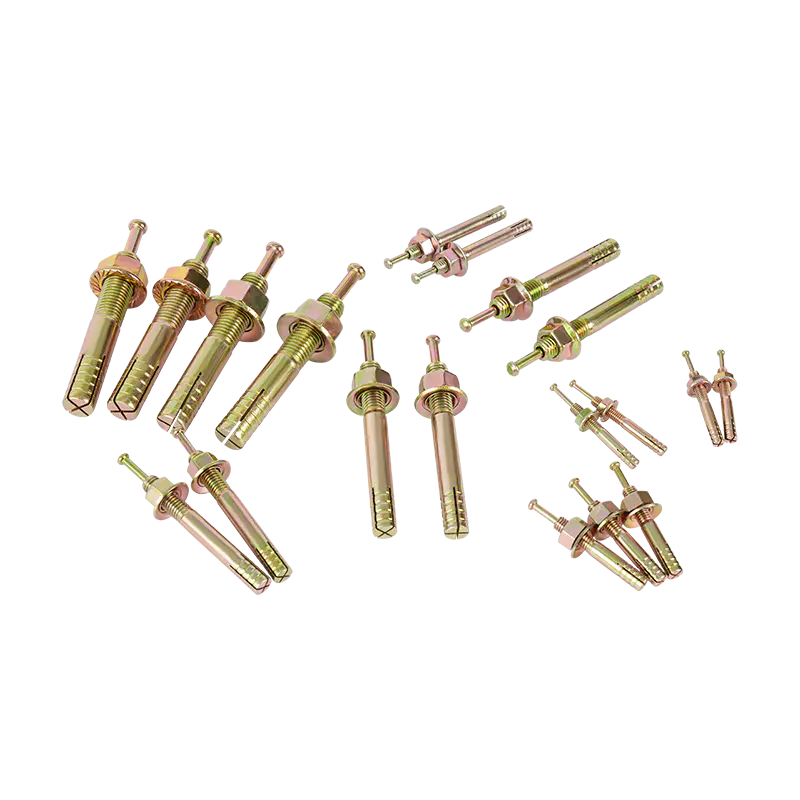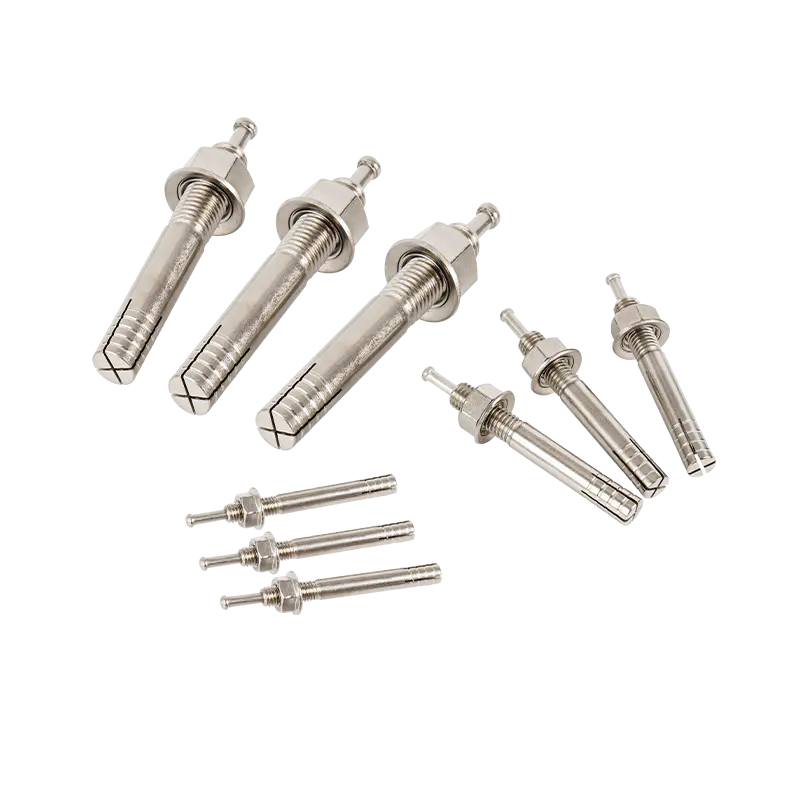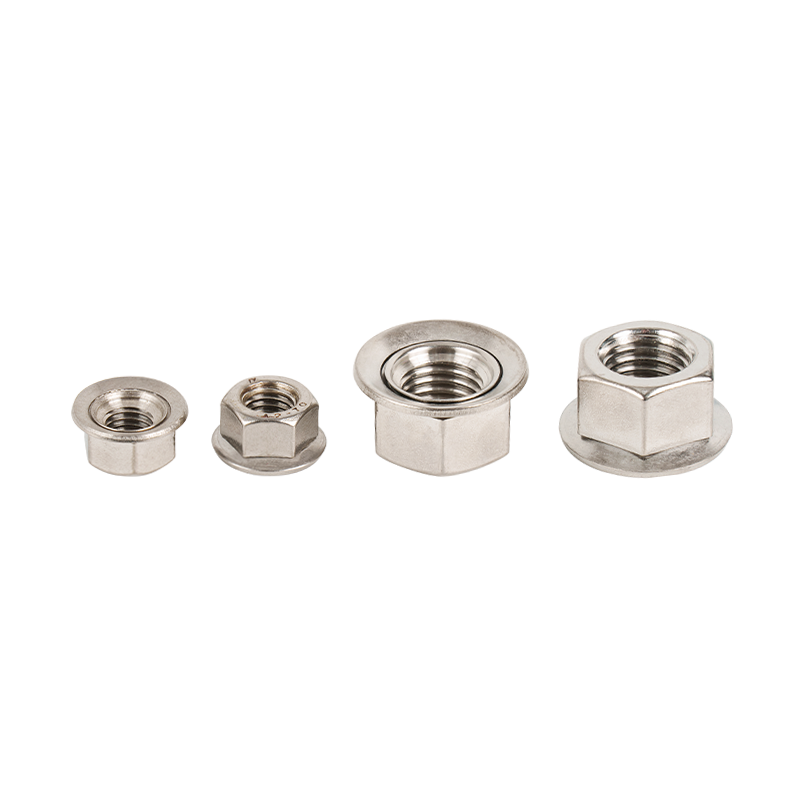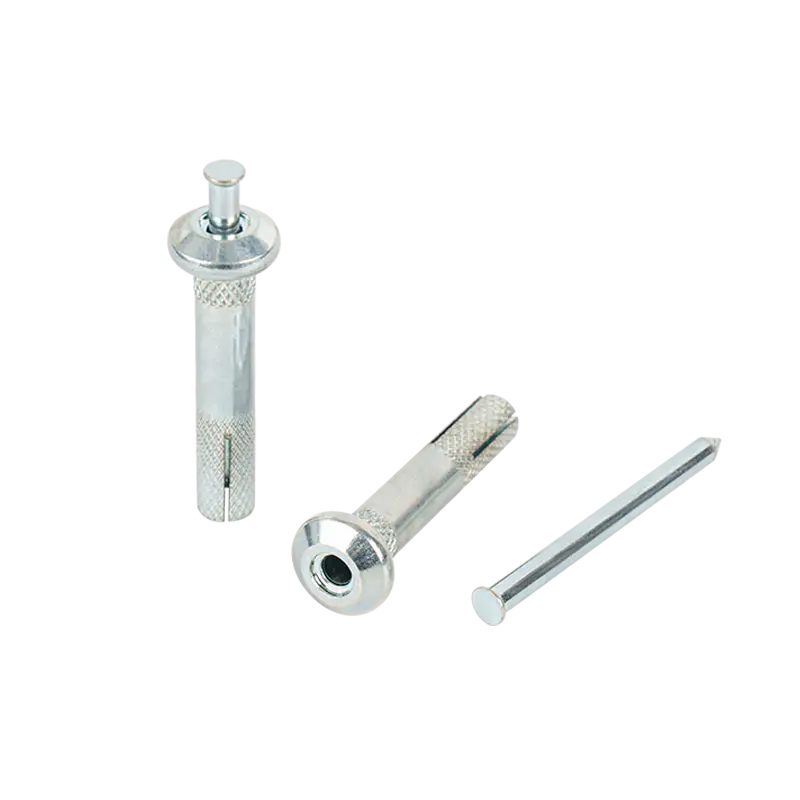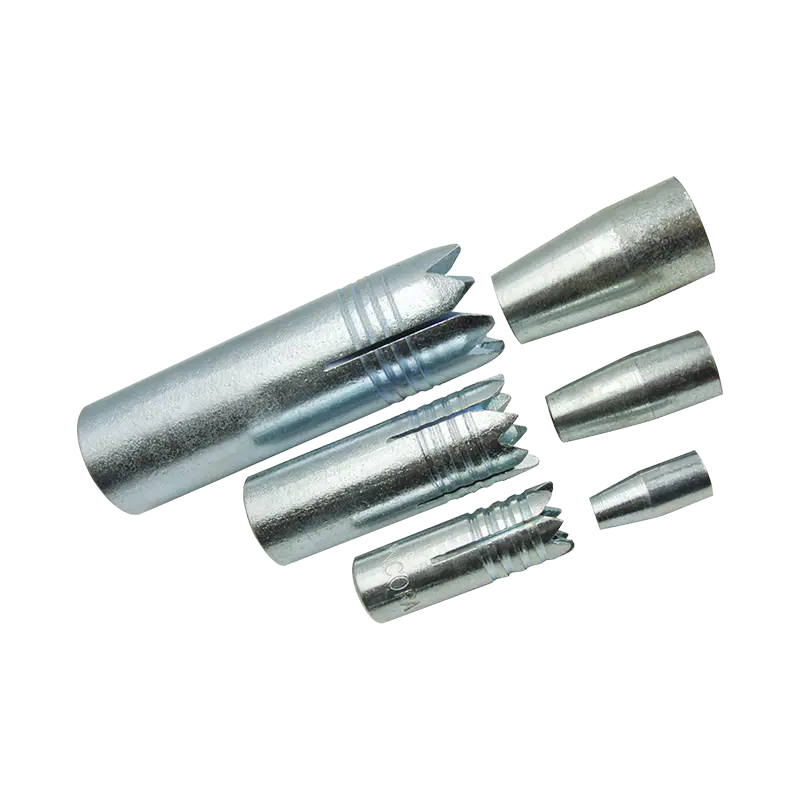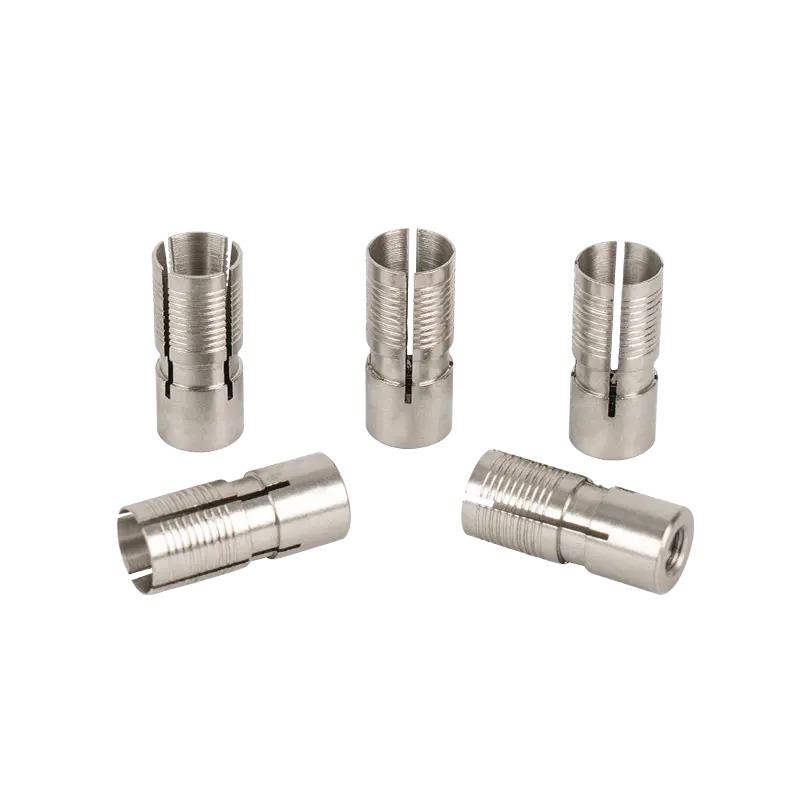Strike Anchor: The "dynamic anchor" that protects building safety
2025-06-15
In modern buildings, bridges, industrial facilities and even life safety systems, it is crucial to ensure that structural components are firmly connected under severe impact, vibration or seismic loads. Strike Anchor (strong mechanical anchor bolt/dynamic anchor bolt) is a high-performance anchoring solution designed to meet this extreme challenge.
1. Core definition: What is Strike Anchor?
Strike Anchor is a mechanical expansion type post-cut anchor bolt. It uses a precise mechanical lock key principle to mechanically expand or form a convex key at the bottom of a pre-drilled concrete hole to generate strong friction and mechanical interlocking force, thereby achieving a high-strength anchoring effect. Its core design concept is to maximize the ability to resist dynamic loads, impact loads and vibrations, especially far exceeding ordinary expansion bolts or chemical anchor bolts.
2. In-depth analysis: structure and working principle
Core components:
Anchor rod: Made of high-strength alloy steel (commonly used carbon steel or high-strength stainless steel, such as A4-80), with threads, used to connect the fixed object and withstand tension.
Expansion sleeve/key mechanism: This is the heart of the Strike Anchor. Usually made of ductile steel. When the anchor is tightened, the expansion sleeve is forced to expand radially at the bottom of the hole or form a specific "key" structure, tightly against the concrete wall of the drilled hole, through the force of a tapered threaded sleeve, drive pin or special keying device.
Washers & Nuts: Standard parts used to compress the fixed object and transfer loads to the anchor system.
Working principle - "bottom lock":
Drilling: Drill a circular hole of specified diameter and depth in the hardened concrete substrate.
Hole cleaning: Extremely critical! All dust and debris must be thoroughly removed from the hole (usually using a special air pump and brush) to ensure that the expansion mechanism is in close contact with clean concrete.
Inserting the anchor: Insert the Strike Anchor assembly (rod, expansion sleeve/key mechanism) into the clean hole until the bottom of the hole.
Tightening the nut: Using a torque wrench, tighten the nut to the exact installation torque specified by the manufacturer. The process:
Pull the anchor rod upward.
Prompts the tapered screw sleeve or drive mechanism to move downward.
Forces the expansion sleeve to generate a strong radial expansion force in the bottom area of the hole, or drives the locking mechanism to form a mechanical bump at the bottom of the hole.
Forms huge friction and critical mechanical interlocking deep at the bottom of the hole.
Load transfer: When the anchor is subjected to tension, the load is transferred to the anchor rod through the thread, and then through the expanded sleeve or the bump formed by the locking key, it is transferred to the high-strength concrete around the bottom of the hole in the form of compressive stress.
3. Excellent performance: advantages and features
Unparalleled dynamic load resistance: This is the core value of Strike Anchor. Its bottom expansion/locking mechanism makes it excellent in resisting seismic loads, repeated impacts, and strong vibrations (such as heavy machinery, rail transportation, and buildings in earthquake zones), which is far superior to top expansion anchors.
High bearing capacity: It makes full use of the high compressive strength of concrete (the bottom area of the hole is usually less stressed and stronger), and can provide extremely high tensile and shear resistance.
Smaller spacing and margin requirements: Since the load is mainly transmitted to the depth of the hole bottom, the distance requirements between anchors and from anchors to the edge of concrete are relatively loose, and the design is more flexible.
Crack applicability: Many certified Strike Anchor models are suitable for possible concrete cracks (in accordance with C2/EOTA or higher standards), and can still maintain considerable bearing capacity during the crack opening and closing process (crack width is usually limited to 0.3mm or 0.5mm).
Immediate load bearing: After installation, the design load can be immediately carried when the specified torque is reached, without waiting for curing time like chemical anchors.
Controlled installation: Standardized installation is achieved through torque control, which is relatively easy to check and verify the installation quality.
Applicable to a variety of substrates: Mainly designed for hardened concrete (C20/25 and above), some special designs can also be used for dense natural stone (must be selected strictly according to the specifications).
4. Key application areas
Strike Anchor is indispensable in key connections that need to withstand high dynamic loads:
Building structures in earthquake zones: beam-column nodes, shear wall connections, and equipment seismic bracket fixings.
Industrial plants and equipment: heavy machinery base fixing (crushers, punching machines, generators), towering equipment (tower cranes, chimneys) base, conveying system brackets.
Energy and power facilities: transformers, switchgear, gas turbines, pipeline seismic support.
Transportation infrastructure: bridge expansion joint anchoring, seismic isolation bearing connection, track fixing system, traffic signal facilities.
Public safety system: anti-collapse reinforcement system, explosion-proof door frame anchoring, key lifeline equipment fixing.
Steel structure connection: steel column base plate, support node, curtain wall keel key fixing point.
5. Design and selection considerations
Load nature and size: Accurately calculate the required tension, shear force, bending moment, especially whether the load is static, fatigue, impact or seismic load. Seismic loads need to consider the design spectrum and load combination.
Concrete substrate: strength grade (C...), whether there are cracks (crack grade C1/C2), thickness, steel bar position (avoid breaking the main reinforcement).
Installation parameters:
Drilling diameter (dh): Must strictly match the anchor bolt specification requirements.
Anchor depth (hef): Minimum depth to achieve the design bearing capacity, which must meet the specification requirements.
Margin (c), spacing (s): Calculated according to the specification (such as ACI 318, EOTA TR 029/TR 045) or the manufacturer's ETA report.
Installation torque (Tinst): Critical! A calibrated torque wrench must be used to accurately tighten according to the manufacturer's specified value. Insufficient torque will lead to a significant reduction in bearing capacity, and excessive torque may damage the anchor bolt or concrete.
Environmental impact: Consider the corrosion risk (indoor dry environment, outdoor atmospheric environment, humid environment, seawater environment, chemical plant) to select carbon steel (must meet anti-corrosion requirements such as galvanizing, Dacromet) or stainless steel (A2/A4). Consider the temperature range.
Fire resistance requirements: If the anchor system needs to participate in the fire resistance structure, it is necessary to select products that have passed the corresponding fire resistance test certification and take supporting fire resistance protection measures.
Seismic certification: When used in seismic areas, anchor bolts must pass strict seismic simulation tests (ATC, AC156, EAD 330232-00-0601, etc.) and obtain corresponding certification reports (such as ICC-ES ESR reports), which will specify seismic design parameters (such as Critical Distance HDA).
Certification standards: Pay attention to whether there is a valid European Technical Assessment (ETA) or ICC-ES Evaluation Service Report (ESR). These reports provide the design bearing capacity value, applicable conditions and design methods of this type of anchor bolt under specific conditions, which are the basis for engineering design and acceptance.
6. Installation is crucial: the key to success or failure
Strictly follow the drawings: Follow the design drawings and specification requirements.
Accurate drilling: Use a suitable drill bit (usually a rotary impact hammer drill with a carbide drill bit is recommended) to ensure accurate hole diameter, hole depth, and vertical hole wall.
Thoroughly clean the hole: This is the most often overlooked and most fatal link! All dust and debris in the hole must be thoroughly removed using compressed air (preferably with vacuum) and a special hole brush, repeating several times until the hole is completely clean. Dust can significantly reduce the anchoring force.
Correctly implant the anchor bolt: Make sure the anchor bolt is inserted to the bottom.
Accurate torque installation: Use a calibrated torque wrench and a trained and qualified operator to tighten in strict accordance with the installation torque value provided by the manufacturer. Record the torque value.
Avoid drilling damage: Avoid damage to the concrete during drilling or installation (such as cracking of the hole mouth).
7. Advantages and limitations
Advantages:
Excellent resistance to dynamic loads (impact, vibration, earthquake).
High bearing capacity.
Instant bearing.
Smaller spacing margin requirements.
Good crack applicability (certified model).
Relatively controllable installation (torque control).
Limitations:
Higher cost: Usually more expensive than ordinary expansion bolts or chemical anchors.
Extremely high installation requirements: Very strict requirements on drilling accuracy, hole cleaning thoroughness, and torque control, and high risk of improper installation.
Substrate restrictions: Mainly applicable to qualified concrete, not suitable for low-strength, severely cracked, aged concrete or porous brickwork, etc.
Hole expansion risk: If the drill hole diameter is too large or the concrete quality is poor, the expansion process may cause excessive extrusion or even rupture of the hole wall.
Non-removable: Permanent anchor, once installed and stressed, it is usually impossible to remove without damage.
8. Industry standards and certifications
The design, testing and application of Strike Anchor are subject to strict international standards:
Europe: EAD 330232-00-0601 (for seismic anchors), EOTA TR 029 (design and installation), ETAG 001 Annex E (assessment method). Obtaining ETA (European Technical Assessment) is the key to market access.
USA: ACI 318 (Concrete Structure Building Code - Chapter 17 Anchorage), ICC-ES AC193 (Verification standard for anchors in concrete), ICC-ES AC156 (Equipment seismic test standard). Obtaining the ICC-ES Evaluation Service Report (ESR) is an important certification.
Seismic test standards: ATC-40, FEMA 461, AC156, ISO 22762, EN 15129, etc. are used to simulate performance tests under seismic loads.
Product standards: ASTM F1554 (anchor material standard), etc.

 English
English 日本語
日本語
